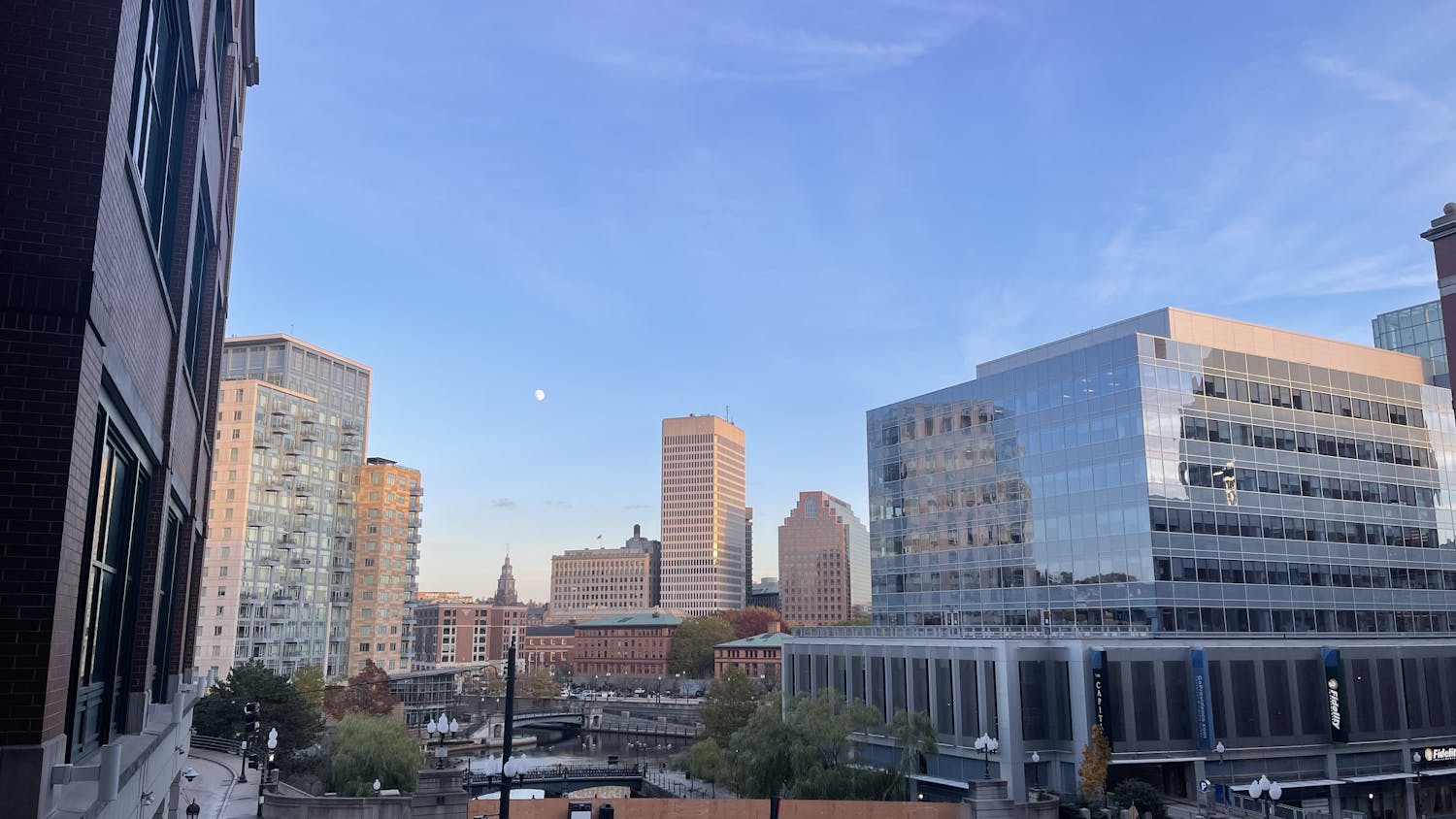Brown needs a place for strangers - a place where it is not only permissible but expected to engage with an unknown fellow student.
It is more than a platitude to say that college is a long series of lost opportunities to meet new people. Ask around, and you'll find that everyone has his or her half-dozen stories about chance encounters, tender moments and bizarre bonds with nameless peers. It is no secret that there is a certain allure to the wistful intimacy found with strangers. I must add that I am not speaking exclusively of romantic engagements.
Considering all this, if these fortuitous connections are so valuable and so constitutive of our Brown experience, we might imagine a need for a venue conducive to this immanent desire - a space where this serendipitous potential can blossom.
Right now, at Brown, this place does not exist.
The dining halls, despite being the largest social forum at the University, are not fit for such a role. When one goes to the Sharpe Refectory, either he or she eats with friends, runs into friends or eats alone. There is no ambient expectation that people eating alone ought to introduce themselves. Witness the phenomena of two solo diners at two adjacent tables.
Now this behavior is obviously reasonable. The desire to read the paper and have breakfast without conversation is an entirely understandable one. I do not think dining halls can be an institution for engaging strangers comfortably. Approaching people here seems either intrusive or too deliberate.
Other candidates similarly fail to meet the post. The library? Meant to be quiet. School performances? Nobody talks in the audience. Clubs? Too self-selecting. Even classes don't really work as a place to meet peer-strangers. While of course, some friends will be made in class, more often than not, there is a subtle barrier to friendship with kids met in class. It is as if somehow the formalistic behavior setting of a classroom cannot be reconciled with a social atmosphere.
When it comes down to it, there is really only one possible alternative: SafeRide.
It's a bizarre, if counter-intuitive option, but with some work, and a mental adjustment, I think it might fit the bill. Ironically, this moving caravan of safety vehicles happens to be the only place where students entirely foreign to each other sit together in a confined space.
Currently, SafeRide is more or less a terminus. By this I mean that the act of hopping into SafeRide is a decisively end-point maneuver: You enter into the van, and your previous endeavor is over. Your friends are gone, and your night out has ended. Of course, there are the occasional friends who ride SafeRide together but this is usually in a reserved manner, observing a presumed "elevator silence" model of behavior.
My proposal is to convert SafeRide into an institution that would embrace its peculiar micro-sociological space.
You're sitting on the vinyl seats, riding to your dorm, and a lowly lit stranger sits next to you. A blank slate acquaintance. No need to fear awkward lingering because in a couple minutes this encounter is going to end either way. So you strike up a conversation.
My vision is of SafeRide as a sort of Archimedean social place. By this I mean an interactional space existing outside of the normal network of one's social life. Far too many students leave Brown with homogenous friend groups for the simple reason that they never had a proper pretense to meet anybody who might have represented an outsider.
I readily admit that there would be many potential pitfalls involved with turning SafeRide into something approximating a place for strangers.
The first is the threat of creating a debauched monster out of a previously wholesome shuttle service. We would need to adamantly oppose turning SafeRide into a extension of the lowest common denominator night out with Top 40 sonic decorations. I am not against music, but I am against creating a simulation of a club with sliding doors and four wheels.
Furthermore, there will always be people on SafeRide who want to spend their four-minute transit in introspective silence. There will also be those who want to engage too much. As it stands, the current non-expectations of the SafeRide social space solve this dilemma.
Another urgent problem worth considering is the need to avoid creating a situation in which the SafeRide riders pester the drivers. Obviously, this is a mandatory condition. That said, if the SafeRide social space consisted of polite conversations at proper decibel levels, this problem might not be one at all.
Finally, how would we keep SafeRide conversation from degrading into simply an exchange of superficial pleasantries, populated by conversational themes akin to, "How about this weather?" Surely, this would be the saddest outcome. Beyond formal expectations somehow published in the unwritten manual of Brown social behavior, I am not sure how this particular obstacle could be overcome. Here, I leave it to the reader's imagination to tie together these loose ends.
Houston Davidson '14 is fascinated by the micro-sociological potential of awkward public spaces.




